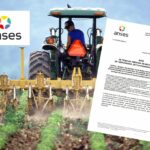
Anomalies in 86% of cosmetics controlled by the DGCCRF
Since 2017, the DGCCRF has been conducting annual checks on cosmetic products containing or likely to contain nanos. The results of the analyses carried out for the year 2021, of which a summary has been published today, once again highlight a considerable proportion of anomalies concerning nanomaterials in cosmetics: out of the 44 cosmetics inspected, 86% showed anomalies, whether they were unauthorized, unlabeled or undersized nanomaterials:
- All makeup products had at least one non-compliance: 18 had unauthorized nanomaterials, and 3 had silica [nano] authorized but not labeled as such;
- Of the 13 sunscreen products sampled, only one complied with the provisions for the presence of nanomaterials. 3 sunscreens did not meet the regulatory minimum median size criteria (30 nm).
- Of the other 11 types of cosmetics checked, 6 (face balm, eye and lip cream, toothpaste, body lotion, dry shampoo and dermatological bar) contained unauthorized nanomaterials or unlabeled silica [nano].
- The 5 raw materials sampled and declared as “non-nano” by the ingredient suppliers were identified as nanomaterials in the analysis.
Note that this high rate is close to that found in 2020 by the DGCCRF and corroborates the analysis of AVICENN which found a non-compliance rate of 100% in the 6 cosmetic products tested in its survey in 2022.
Requests were sent to the companies concerned (as well as to the relevant public authorities when these companies were foreign), in order to bring them into compliance.
The DGCCRF has also asked the professional federations to put together the necessary files for the regularization of the use of dyes present in the form of nanomaterials (titanium dioxide, iron oxides), provided that the evaluation of their risks at the European level can be established.
The absence of a standardized method of analysis of nanomaterials having led to numerous challenges from operators, the DGCCRF asked the Service commun des laboratoires (SCL) to produce a methodological note on the analysis of nanoparticles and the characterization of nanomaterials present in consumer products. This is a highly awaited event for the cosmetics industry.
In 2023, the DGCCRF will continue the controls and monitor the effectiveness of the measures requested in 2022.

Other news on the topic
Our information sheets to go further
Upcoming Nano Agenda

- Citizen webinar for the general public and the university community.
- Organizers: Research department Law & Social transformation (DETS), University of Bordeaux
- Speakers:
- Marion Tissier-Raffin, Senior Lecturer in Public Law, Centre de recherche et de documentation européennes et internationales (CRDEI), University of Bordeaux
- Mathilde Detcheverry, General Delegate, Association AVICENN – Veillenanos
- Didier Morin, University Professor of Neuroscience, UMR CNRS INCIA, University of Bordeaux
- Website: https://dets.u-bordeaux.fr/animation-scientifique/webinaires-citoyens/saison-2024-2025

- 5th Joint Symposium on Nanotechnology
- Organizers: the Fraunhofer Nanotechnology Network, with the support of the Federal Institute for Risk Assessment (BfR)
- Date: May 13-14, 2025
- Topics:
- the application of nanotechnology in various sectors, including digitalization, 2D/3D printing, carbon-based materials and battery materials
- nano on various regulations (REACh, food contact materials, cosmetics, bioagents, PPPs)
- adaptation and development of OECD Test Guidelines for nano and advanced materials (Malta Initiative)
- review on nano-specific NAMs (new approach methodologies)
- when you’re nano and you know it: dealing with uncertainty regarding the nanomaterial definition in regulatory frameworks
- …
- Website: www.isc.fraunhofer.de/…2025/5th-symposium-nanotechnology.html
- 4-day training :
- the different routes by which toxic substances can enter the body
- the importance of toxicokinetics in preventing the toxicity of substances,
- the absorption, distribution, metabolisation and elimination of xenobiotics
- the toxicity of nanoparticles
- Organizer : Association Toxicologie Chimie (ATC)
- From May, 19 to May, 22
- Speakers :
- Frédéric Gaidou (Chemical engineer specialising in Toxicology, ERAMET Group, Paris, President ATC Paris)
- Sarah Dognin dit Cruissat (Doctor of Pharmacy, nutritionist, toxicochemist, CALMEVA, Lyon)
- Jean-Dominique Puyt (Veterinary Doctor, Honorary Professor at the École Vétérinaire, Nantes)
- Isabelle Malissin (Doctor, Hôpital Lariboisière, Paris)
- Nicole Proust (Research Engineer, Honorary Director of Research at the CNRS, Specialist in Nanotechnologies, Arsenic, Electromagnetic Waves, Palaiseau)
- Marie-Chantal Canivenc-Lavier ((Nutri-toxicologist, Centre des Sciences du Goût et de l’Alimentation INRA-Dijon)
- Claude Lesné (Doctor, Honorary Senior Research Engineer at the CNRS)
- Nicole Proust (Ingénieure Recherche, Directeur de recherche honoraire du CNRS, Spécialiste Nanotechnologies, Arsenic, Ondes électromagnétiques, Palaiseau)
- Website : https://www.atctoxicologie.fr/notre-formation.html





